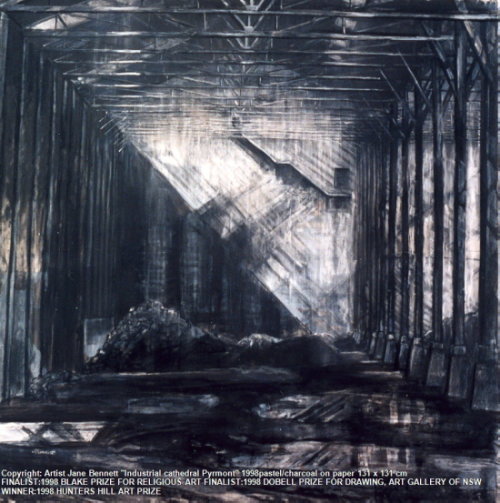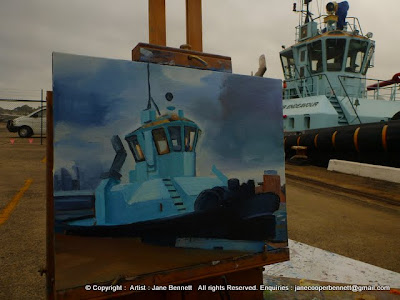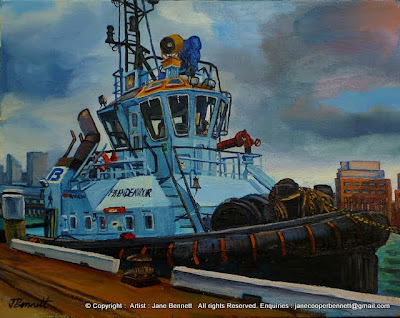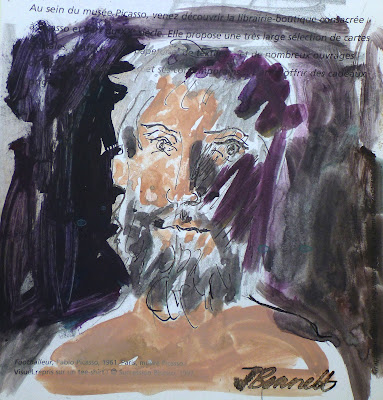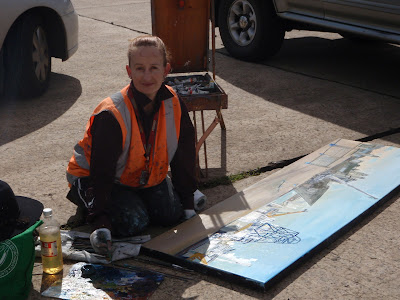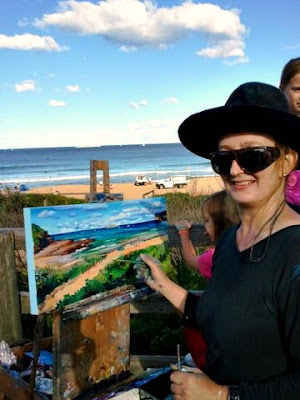The southern edge of the Sydney CBD, adjacent to Central railway station incorporating Broadway and Chippendale, was dominated
by a walled off 'Empire of Beer' for over 170 years.
Kent Brewery was built by John Tooth and
Charles Newnham in 1835. It exploited the fresh
water from nearby Blackwattle Creek. However,
Blackwattle Creek didn't stay fresh for long, and soon the surrounding area was a notorious slum.
The unregulated and noxious local industries included the Swamp Abattoirs across Parramatta Road in Ultimo, which provided the Char House of the Colonial Sugar Refinery with bones to burn to produce charcoal for filtering sugar.


CH4 Pub with no beer- Carleton United Brewery 2
2009 oil on canvas 75 x 100cm
Available
2009 oil on canvas 75 x 100cm
Available
When bubonic plague hit waterside Sydney in the first decade of the 20th century, the authorities embarked on a program of slum clearances and 350 Chippendale houses were resumed by 1911.
Tooth's brewery site moved into the vacuum, extending their empire of beer more than 6 acres into the
surrounding residential areas. Tooth's owned the western side of Kensington Street, and demolished properties to construct new brewery buildings, as well as a wall to exclude the public. Yet another wall was built on the northern side
of Wellington Street.
You can see this wall running behind the Irving Street Brewery boiler house in the painting above, which was painted during the demolition craziness not long after the property had been bought by Frasers Property for redevelopment.
Tooth’s Irving Street Brewery was built in 1912, and covered most of the land between Carlton and Balfour Streets.
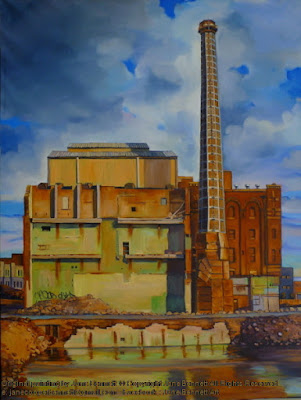
CH3 Pub with no beer- Carleton United Brewery
2009 oil on canvas 100 x 75cm
Available

CH3 Pub with no beer- Carleton United Brewery
2009 oil on canvas 100 x 75cm
Available
This iconic Sydney landmark is an 180 ft high octagonal brick tapering structure with
metal strapping with cracked coping. Brick buttresses transfer the structure to a square
base.
The Irving Street Brewing Tower ceased its brewing operation in 1979, as it was superseded by the New Brewhouse.
It was one of the earliest and most prominent chimney stacks built in the CBD, and one of the last remaining in inner Sydney.
In the 1980s, a large redevelopment saw the demolition of all but one of the
original Kent Brewery buildings. and Carlton and Uniting
Breweries purchased it.
Until 1983 there were 1000 personnel at the brewery including lab
staff, engineers, plumbers, fitters and turners, coppersmiths,
blacksmiths, coopers, trades assistants, storemen, drivers and security.
In 1983 Tooth and Co were taken over by the Adelaide Steamship Company
and the brewing assets were sold to Carlton and United Breweries and in 2003 the brewery closed forever.
Frasers Property bought the 5.8 hectare site in 2007 and embarked on a wildly ambitious $2 billion urban renewal project. It incorporates mixed use development including high density apartments,student accommodation in Kensington and Abercrombie Streets, a shopping centre, office blocks, and the old
Brewery will be turned into a boutique hotel.
In my paintings you can see how the Irving Street Brewery building resembled a ruined castle on an island in the middle of a moat. It was a dreadfully boggy site after all the other buildings were clear felled around it and therre was a perpetual pool of water surrounding the old brewery.
Some
heritage features have been selectively kept in the mix. Run down
terraces in Kensington Street have become "Spice Alley", a funky "Eat
Street", the sandstone gateway has been kept and the Irving Street Brewery building has now been adaptively reused as a community facility while also
housing the site’s sustainable features including the tri generation
plant providing the power, heating and cooling.
Chippendale, once an embarrassing slum, is now the fashionable hipster enclave known as Central Park.
Related posts
